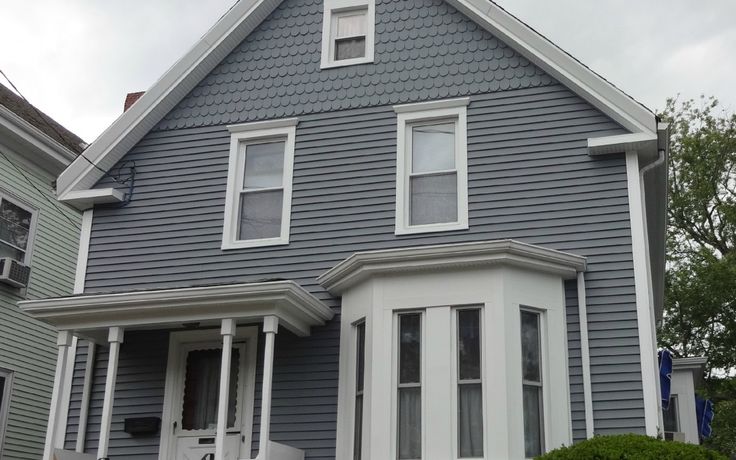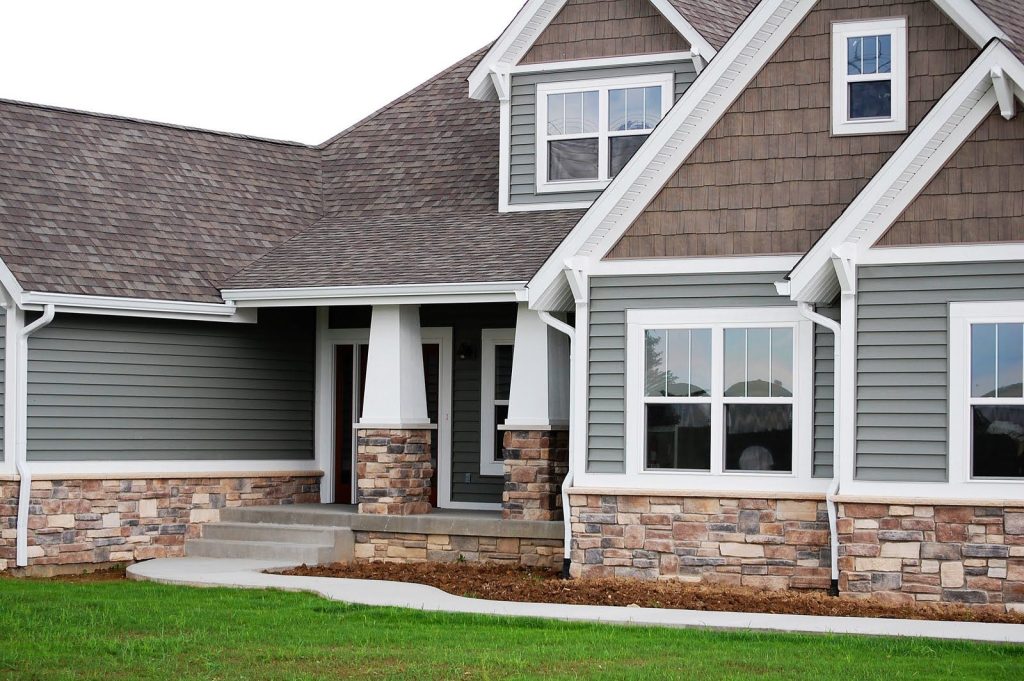Choosing the right color for your siding is one of the most important decisions when it comes to your home’s exterior. The color sets the tone for your house, influences curb appeal, and even affects resale value. But with so many color options and combinations available, selecting the perfect shade can be overwhelming. Here are some practical tips and tricks to help you choose the right siding color, ensuring your home looks beautiful and welcoming for years to come.

1. Consider Your Home’s Architectural Style
Every architectural style has a set of color palettes that traditionally complement it. Choosing colors that align with your home’s style can help enhance its character and curb appeal. For example:
- Colonial and Victorian homes often look great with classic colors like white, gray, and navy blue. Darker, richer colors like deep greens and burgundy can also suit Victorian homes.
- Modern and Contemporary homes tend to work well with neutral tones, such as charcoal, black, and soft grays, or even bolder choices like navy and dark green to make a statement.
- Cottage and Craftsman styles benefit from warm, earthy tones like beige, sage green, and warm gray, which add a cozy and welcoming feel.
Understanding your home’s architectural style is a great starting point for narrowing down color choices that will look cohesive and timeless.
2. Take Your Home’s Surroundings Into Account
Your home doesn’t exist in isolation—it’s part of a larger landscape. When selecting a siding color, consider the natural surroundings and the color schemes of neighboring homes. If your home is surrounded by lush greenery or set against a mountainous backdrop, earth tones and muted greens can blend beautifully with the environment.

For homes in urban areas or modern neighborhoods, a sleek gray or charcoal siding can offer a contemporary look that fits well with the urban setting. Pay attention to the overall color scheme of your street as well; choosing a color that complements nearby homes can enhance the harmony of the neighborhood, while a color that clashes may look out of place.
3. Understand the Impact of Light and Climate
Light and climate can significantly influence how a siding color appears. Colors often look different in natural daylight compared to artificial light or shade, so it’s essential to see how the color will look throughout the day and under various weather conditions.
- Bright, sunny climates: In areas with a lot of sunlight, lighter colors reflect heat and help keep your home cooler. Whites, light grays, and beiges work well in sunny climates and maintain their appearance without fading quickly.
- Cloudy or cooler climates: Darker colors, such as deep blues, greens, and grays, add warmth and look stunning in cloudy or snowy regions. However, these colors can absorb more heat, so keep this in mind if your winters are harsh and you want a color that will hold up well.
To avoid surprises, test a few paint samples on your home and observe them at different times of day and in varying weather conditions.
4. Match the Color to Your Roof and Trim
Your home’s siding color should complement its fixed elements, like the roof, trim, and even hardscaping. For example, a gray or black roof pairs well with many colors, but if your roof has a warm tone, such as brown or reddish hues, it’s best to choose siding colors that blend with these tones.
If your home has decorative trim, shutters, or columns, they can add depth and personality to your color scheme. Choosing contrasting trim colors can create a bold, eye-catching effect. For instance:
- White trim often pairs well with almost any siding color and can provide a classic look.
- Dark trim on a lighter siding color, like light gray with black or charcoal trim, gives a contemporary feel.
- Matching the trim color to your siding can create a monochromatic look, while a contrasting color will add dimension and interest.
5. Consider the Style and Texture of Siding
The type of siding material you choose will also impact how colors look on your home. Some siding materials, like brick and stone, come in limited color options but add texture and depth that create a unique look. Painted wood siding and fiber cement are highly customizable and can hold a variety of shades, but the texture of the wood or cement can affect how the color is perceived.
For example, smooth siding surfaces give colors a cleaner, more uniform look, while textured surfaces, like wood grain or stucco, add depth and can make darker colors appear richer. Always consider how the material’s texture and finish will impact the final look of your chosen color.
6. Think About Long-Term Trends and Resale Value
While trendy colors like bold blues and greens might be appealing, it’s important to think about long-term appeal, especially if you plan to sell your home in the future. Neutral colors, such as gray, beige, and soft white, are timeless and tend to have broader appeal among potential buyers. They also provide a clean backdrop for landscaping, outdoor decor, and other accent colors.
If you want to add personality while still maintaining resale value, consider using bold colors on smaller accents like shutters, doors, or trim. This approach lets you add style without committing the entire exterior to a potentially fleeting trend.
7. Use Color Tools and Samples for Visualization
Choosing a color based on a small swatch or a photo can be challenging. Many paint and siding companies offer color visualization tools that allow you to upload a photo of your home and experiment with different colors. These tools give a better sense of how the color will look on your home’s architecture.
Even after using a digital tool, it’s a good idea to apply physical samples of your chosen colors directly on the exterior to see how they look in different lighting conditions. This will help you visualize the color more accurately and confirm your choice before making a final decision.
8. Don’t Forget About Accents and Details
Adding accents to your color scheme can make your home’s exterior look polished and cohesive. Choose a complementary color for your door, shutters, and other small details to enhance your home’s curb appeal. For example:
- Bold front door: A bright red or blue door on a neutral home can be a welcoming focal point.
- Contrasting shutters: Shutters in a color that contrasts with your siding, like black on white or blue on beige, add depth and personality.
- Natural wood elements: If your home’s style allows it, natural wood accents add warmth and an earthy feel that pairs well with neutral siding colors.
Accent colors give you the freedom to play with bold tones without overpowering the overall look.
9. Get Inspiration from Popular Color Palettes
Choosing the right siding color can be easier when you look at curated color palettes for inspiration. Many paint and siding brands release popular color palettes every year based on market trends, interior decor, and exterior design. These palettes often group colors that work well together, providing a cohesive and balanced look.
Common palettes include:
- Neutral and modern: Shades of gray, black, and white for a minimalist aesthetic.
- Earth tones: Warm browns, beiges, and greens for a natural, cozy appearance.
- Bold and bright: Vibrant blues, reds, and greens for a standout look.
Using a pre-selected palette can make the decision process less overwhelming and ensure a well-coordinated exterior.
Conclusion: Finding the Perfect Siding Color for Your Home
Choosing the right color for your siding involves more than just picking a shade you like—it’s about creating harmony with your surroundings, highlighting your home’s best features, and enhancing its architectural character. With the right approach, you can create an exterior color scheme that not only makes your home look beautiful but also complements your personal style and neighborhood.

Take your time exploring different colors, using visualization tools, and testing samples to find a color that resonates with you. By following these tips and tricks, you’ll be well on your way to choosing a siding color that provides long-lasting beauty, protection, and satisfaction.




